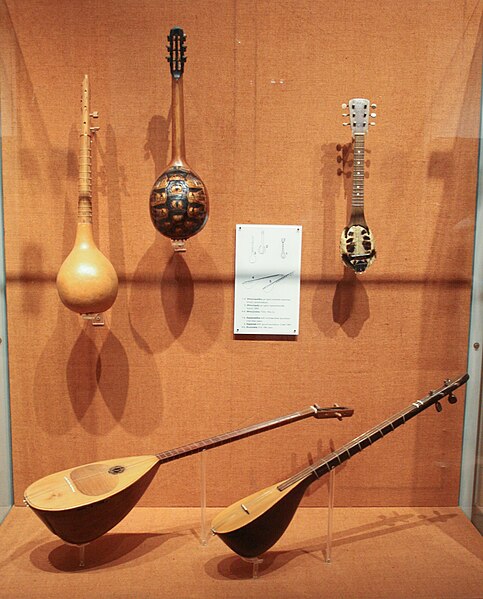Anestis Delias was a Greek bouzouki player, composer and singer of rebetiko. Delias was from a musical family of Smyrna in Anatolia, who arrived on the Greek mainland as a young refugee during the Greco-Turkish war. He became an accomplished player of the bouzouki and joined with other musicians in the refugee suburbs of Athens and Piraeus, creating music in the 1930s that exemplifies the genre known as Piraeus rebetiko. Delias played on early rebetiko recordings, including songs of his own composition released under his name. He became addicted to heroin and died of starvation, aggravated by his drug dependency, during the Nazi occupation of Greece. Despite his short life, Anestis Delias was an important figure and an influential exponent of the Piraeus-style of rebetiko.
Anestis Delias in about 1934.
Members of The Famous Quartet of Pireaus, (l. to r.) Stratos Pagioumtzis, Markos Vamvakaris, Yiorgos Batis and Anestis Delias.
The bouzouki is a musical instrument popular in Greece. It is a member of the long-necked lute family, with a round body with a flat top and a long neck with a fretted fingerboard. It has steel strings and is played with a plectrum producing a sharp metallic sound, reminiscent of a mandolin but pitched lower. It is the precursor to the Irish bouzouki, an instrument derived from the Greek bouzouki that is popular in Celtic, English, and North American folk music. There are two main types of Greek bouzouki: the trichordo (three-course) has three pairs of strings and the tetrachordo (four-course) has four pairs of strings. The instrument was brought to Greece in the early 1900s by Greek refugees from Anatolia, and quickly became the central instrument to the rebetiko genre and its music branches. It is now an important element of modern Laïko pop Greek music.
Bouzouki
Bouzouki player in Athens, July 2018
Bouzouki in the Museum of Greek Folk Musical Instruments in Athens
The tambouras of Yannis Makriyannis in the National Historical Museum, Athens






